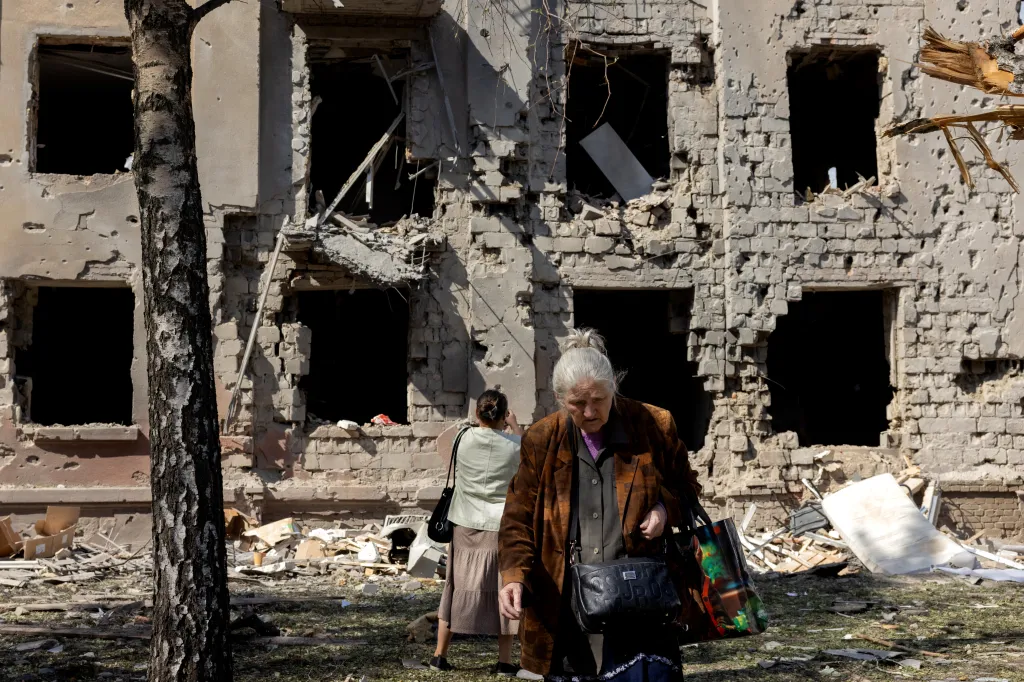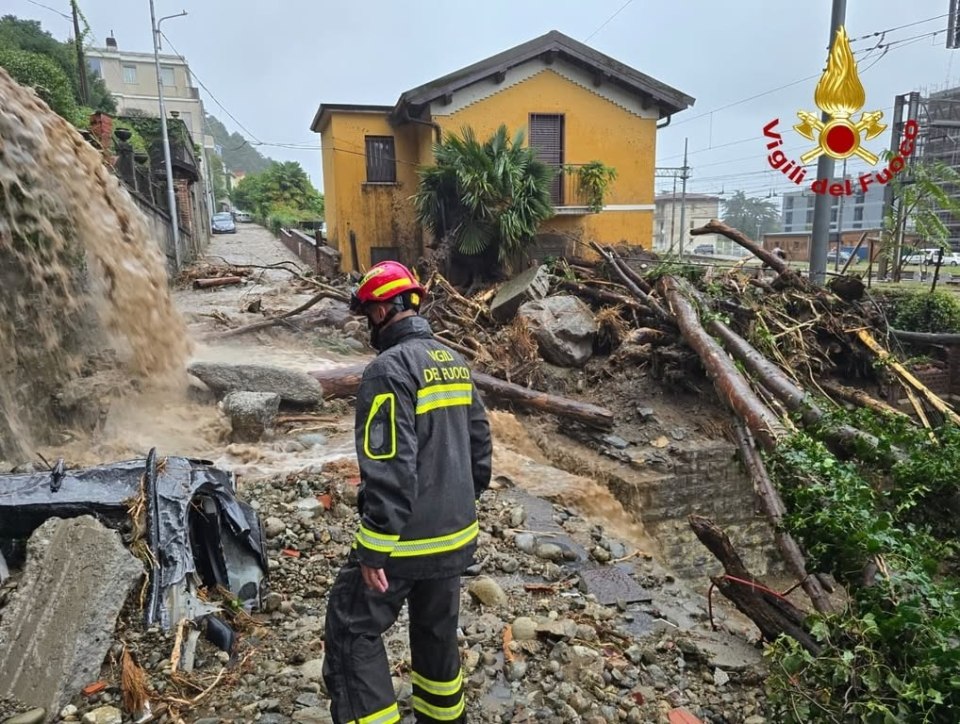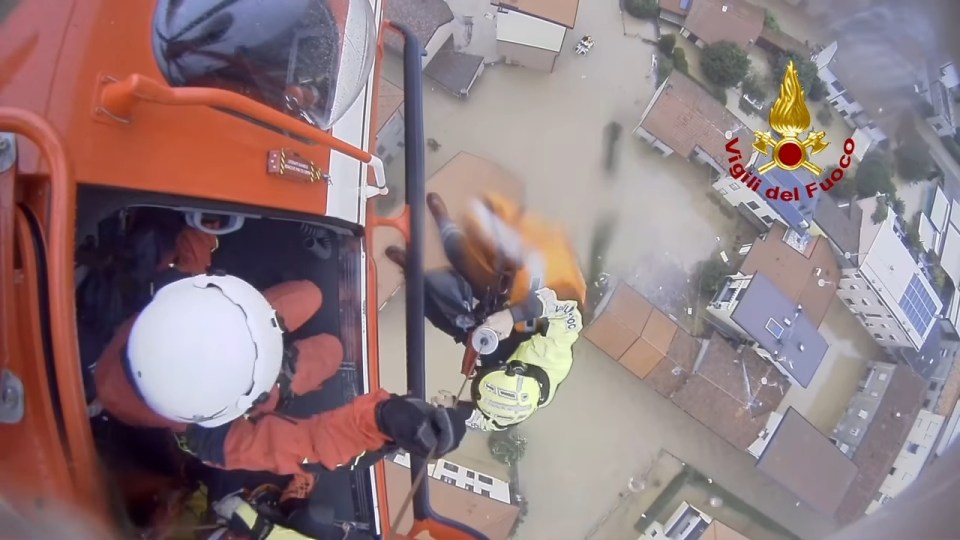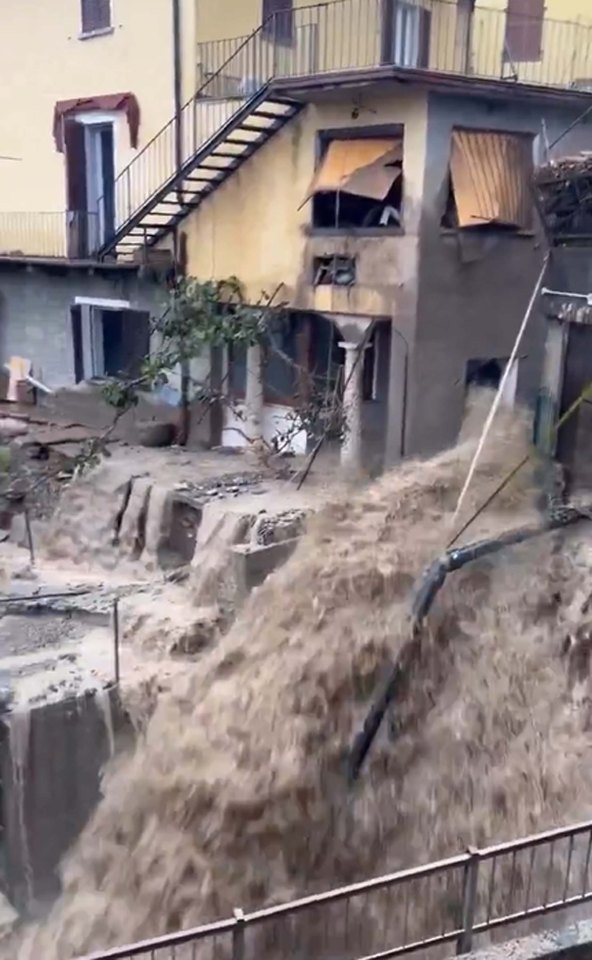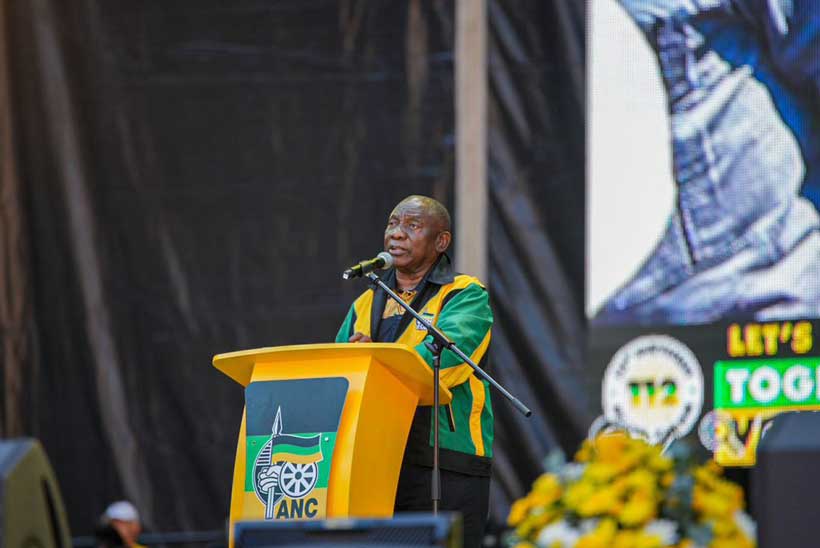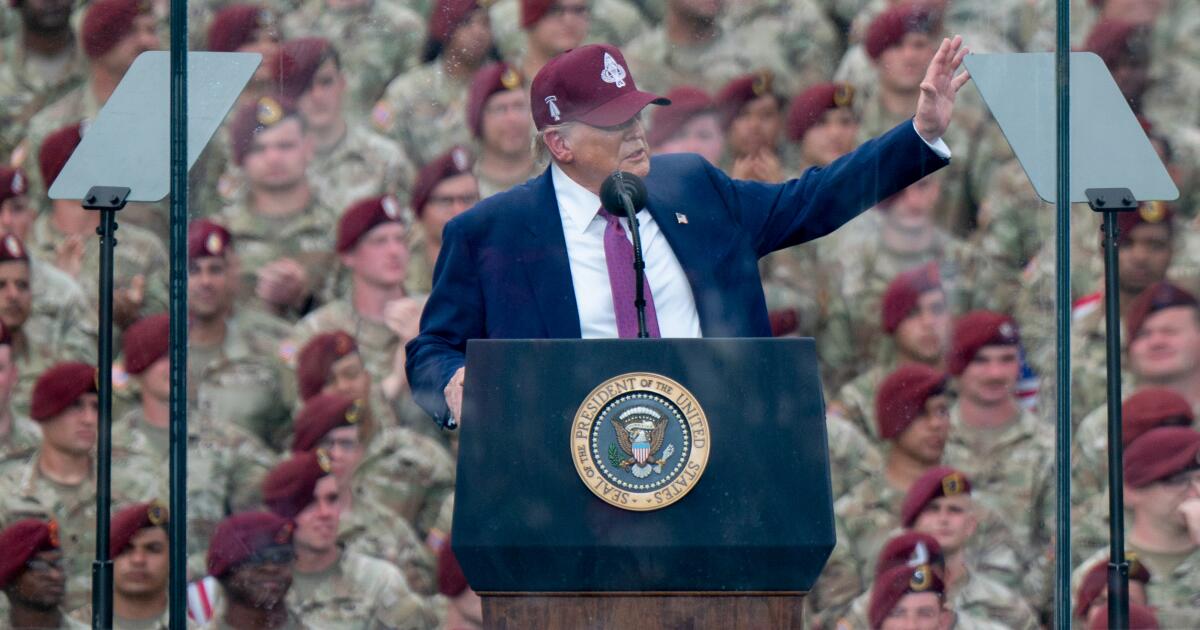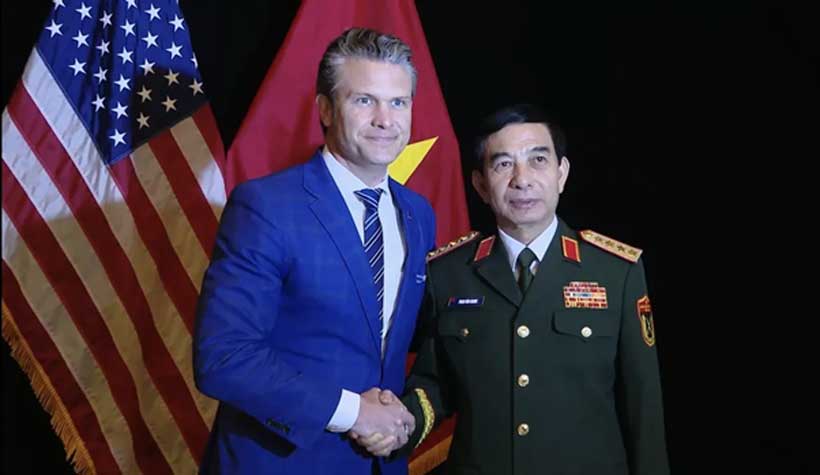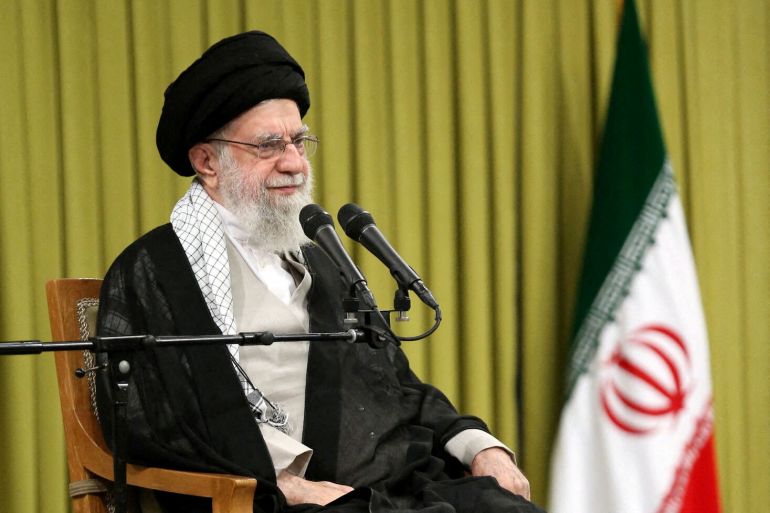Barry Seigel, a Times national correspondent, is the author of “Death in White Bear Lake” and “Shades of Gray,” both published by Bantam Books. His last story for this magazine was about the University of Wisconsin’s effort to outlaw hate speech
WHEN FBI AGENT JON LIPSKY PROPOSED IN JUNE, 1988, THAT they “do Rocky Flats,” Assistant U.S. Atty. Ken Fimberg gave him the type of look you’d direct at someone who’d just said something intriguing but utterly wacky. Lipsky was neither surprised nor offended, for he more or less shared this response. They were sitting in Fimberg’s office in the federal courthouse building in downtown Denver. With them was William Smith, an Environmental Protection Agency investigator. As Lipsky’s suggestion hung in the air, the three men couldn’t suppress their grins. Yeah, sure, Fimberg thought, we’re going to prosecute Rocky Flats for environmental crimes. For the moment, they all pretended it was a crazy joke.
The Rocky Flats Nuclear Weapons Plant, after all, was a top-secret, high-security, 100-building fortress spread over some 400 acres on a mesa 16 miles northwest of Denver. You couldn’t just stroll in there. They had guards who were allowed to shoot. They also had missiles–real anti-aircraft rockets. The potential political controversies looked even nastier than the firepower. Although operated under contract by Rockwell International since 1975, Rocky Flats in fact belonged to the United States Department of Energy. There’d never been a criminal environmental case brought against a federal facility. If the U.S. attorney’s office in Colorado were to go after Rocky Flats, one federal agency in effect would be raiding another. The tangled mass of murky environmental law was hard enough to navigate without that complication. “Doing Rocky Flats” would be a huge, unimaginable undertaking.
The idea was tantalizing to Fimberg, though. Then 34, he was not unfamiliar with the weapons plant. A dozen years before, studying at the University of Colorado in Boulder, just up the road from Rocky Flats, he’d sometimes driven by the place at night. In the dark, surrounded by a perimeter of lights, sitting up on that plateau giving off a yellow-tinted glow, Rocky Flats made quite an impact. Its troubled, 35-year-long history made an even bigger one. From government studies and press reports, Fimberg knew of the two explosive fires, one in 1957 that had spewed unfiltered plutonium into the air and another in 1969. He knew of the 5,000 gallons of plutonium-contaminated oil that had leached into the soil between 1964 and 1967. He knew of the toxic materials such as beryllium and tritium that had leaked for years into the ground water. He knew of the lawsuits by neighbors that had forced the government in 1984 to buy a 6,550-acre buffer zone around Rocky Flats. He knew that about 1.8 million people lived within 50 miles of the plant.
He now also knew what Lipsky and Smith had turned up during a discreet, yearlong preliminary investigation. Their reports were spread out on the desk between them. They looked interesting.
The prosecutor and two agents eyed each other. Working together the year before on another case, they’d convicted Protex Industries Inc. for exposing three employees to toxic substances–the first such “knowing endangerment” conviction in the nation. The Protex verdict was six months behind them, though. They’d had plenty of time to catch their breath and pat themselves on the back.
Their jokes about the Rocky Flats idea trailed off. Well, why not do Rocky Flats?
Looking back now at this moment in Ken Fimberg’s office, it is tempting to ask whether there ever would have been a Rocky Flats prosecution if the three men sitting there that day had fully grasped what they were getting into. Fimberg, after all, would eventually find himself taking on not just a giant DOE nuclear weapons plant but also 40 years of deeply institutionalized public policy. For pushing his case too hard, he’d eventually face restraints and a change of heart from his politicized Department of Justice supervisors. For pushing too softly, he’d end up being investigated and denounced by an outraged congressional subcommittee. For being beset by ambivalence, he’d get flattened by a runaway grand jury that disagreed with him not so much over the facts as over what to make of them.
Only much later would Fimberg realize that he’d created these problems by inadvertently tackling several complex and ambiguous questions. When broad elements of the federal government disregard the law, who is to blame? Are people to be called criminals if they act in accordance with a pervasive institutional culture? Should Rocky Flats managers be indicted for carrying out the will of their supervisors and employers? For that matter, should grand jurors obey court officers, and prosecutors bow to their bosses, even when they think doing so is wrong? In the end, these were the issues at the heart of the Rocky Flats investigation. Ken Fimberg’s inquiry eventually would become a disturbing exploration into the personal moral responsibility not just of bomb-plant managers but also of their judges–the 23 grand jurors and Fimberg himself.
Perhaps Fimberg would have pursued Rocky Flats even if he’d known he’d have to confront all this. After all, he left a big commercial law firm for the U.S. attorney’s white-collar-crimes unit because he’d tired of “moving big amounts of money from one pocket to another” and thought there were “more important things to do.” He’d clerked for the Environmental Defense Fund and served on the board of the Colorado Wildlife Federation because of a passion for the wilderness. He’d studied moral philosophy and political science at Boulder, and the law at Harvard, because he’d always been interested in “how the legal system forms social values.”
In the end, though, it was not just ethics or idealism or the environment tugging at Fimberg on this June morning. Unvarnished ambition lured as well. Here was a new goal, a larger challenge, a chance once more for a big win.
“Do you know,” Fimberg asked his colleagues, “just how hard Rocky Flats is going to be?”
THERE WAS A TIME WHEN ROCKY FLATS AROUSED PRIDE AND PATRIOTISM, not prosecutors. Against the context of the Manhattan Project and the Cold War, the discovery of plutonium and the spread of fallout shelters, the Denver Post in a March 23, 1951, headline felt inspired to announce “There’s Good News Today–U.S. to Build $45 Million A-Plant Near Denver.” The plant’s chief task, to manufacture plutonium triggers for nuclear bombs, was carried out under a cloak of secrecy and an autonomy that few disputed. The country wanted to make bombs, not worry about the environment.
Even in later years, after environmental concerns mounted and Congress adopted statutes such as the Clean Water Act and the Resource Conservation and Recovery Act (RCRA), the politicians either exempted DOE bomb plants from the new laws or fudged the issue with vague language. Then, when efforts to regulate weapons plants did begin in the early 1980s, DOE managers fiercely resisted, insisting environmental laws like RCRA didn’t apply to the particular type of waste they generated. Rocky Flats managers often blindfolded EPA investigators before leading them through the plant. The regulatory agencies may not have liked that, but they played along, negotiating “compliance agreements” and “memos of understanding” whose deadlines were rarely met.
It was against this backdrop that EPA investigator Bill Smith brought a curious document to FBI Agent Jon Lipsky in May, 1987. The two of them sat hunched together in Lipsky’s cubicle in the FBI’s Denver office, staring at Smith’s prize. It was an internal DOE memo directed to Mary L. Walker, then the department’s assistant secretary for environment, safety and health. The memo had been written 10 months before, by Walker’s assistant, John Barker, to brief her about yet another compliance agreement DOE was supposed to sign with the EPA and the Colorado Department of Health. This one would finally clarify that RCRA did indeed apply to some of Rocky Flats’ hazardous waste. As usual, DOE was resisting.
“The language seeks to ‘finesse’ the issue of EPA’s authority. . . .” Barker informed Walker. “The only question is one of whether there is a sufficient degree of vagueness and ambiguity; the proposed language provides this.” DOE should not fight this deal, Barker advised. “The compliance posture of Rocky Flats makes it a poor candidate for testing fine points of law. . . . Much of the good press we have gotten from the Agreement in Principle has taken attention away from just how really bad the site is. . . . We have basically no RCRA groundwater monitoring wells. Our permit applications are grossly deficient. Some of the waste facilities there are patently ‘illegal.’ We have serious contamination.” Failure to sign the deal would “suggest that direct, harsh enforcement action . . . will be more expeditious and productive.”
Lipsky understandably found this memo interesting. Then in his early 30s, he was a onetime Las Vegas street cop who had worked his way into the FBI through bulldog persistence. Lipsky had a casual manner, an unimposing build and a taste for the type of lackluster sport coats and checked socks favored by cautious back-room clerks. Lipsky also had a taste for the public corruption beat, particularly environmental crimes. He’d attended training sessions, he’d lectured other FBI agents, he’d been lead investigator in 13 environmental cases. In the Mary Walker memo he smelled his 14th.
Ken Fimberg was intrigued but hesitant when Lipsky and Smith first came to him. Born and raised in Oklahoma City, Fimberg’s commitment to the environment was undeniable, his reputation for integrity squeaky clean. He hiked, he climbed mountains, he rafted rivers, he led a boys’ camping and sports program at his local church, he volunteered as a Big Brother. Full-faced, almost burly, with a mustache and an earnest manner, he liked to thrash out issues with others. He also, though, liked to temper his instincts with a certain rational calculation. He tended to frame and qualify his remarks with the logic of a lawyer.
This bent toward caution prevailed at first. Fimberg knew the movement of prosecuting environmental crimes was still in its infancy. Those few who ventured into the new field usually ended up wrestling with obtuse regulations and mountains of complicated documents. White-collar crime was not sexy. You needed to master a computer database rather than a witness in an interrogation room. You also needed to hold your own with meddlesome Department of Justice supervisors in Washington who didn’t always share their line prosecutors’ enthusiasm for environmental-crime enforcement.
“It’s too early to tell,” Fimberg told the agents that first summer. “Keep poking around. Be discreet. I won’t stop you.”
When they returned to Fimberg a year later, in June, 1988, Lipsky and Smith brought not just suspicious memos, but particulars. The numbers didn’t add up. The numbers didn’t match the permits. The numbers didn’t match the available storage space. Where was all that waste going? The incinerator in Rocky Flats Building 771 seemed to provide the answer. The DOE and Rockwell had always insisted this incinerator was exempt from RCRA regulation because it was a “plutonium recovery” facility, one of those exclusions Congress had given bomb plants. But Lipsky believed the 771 incinerator was in fact burning hazardous wastes, not recovering plutonium. The waste had to be going somewhere. Lipsky was sure it was going up in smoke.
Fimberg considered the reports before him. “I think we have enough to go forward,” he finally told the agents.
Together, the three made an initial presentation that August to acting U.S. Atty. Michael Norton. For a while, Norton held off making a decision. Then an event at Rocky Flats changed the equation.
On Sept. 29, a DOE inspector named Joseph Krupar, while inspecting Building 771, walked unprotected into a radioactive zone that had no warning signs. Understandably disturbed, Krupar railed at assorted DOE and Rockwell supervisors. Building 771 is out of control, he later told FBI agents; in fact, he charged, Rockwell places production over safety all over Rocky Flats. On Oct. 7, DOE responded by ordering the temporary shutdown of Building 771.
Two weeks later, Fimberg, Lipsky and Smith met in the U.S. attorney’s conference room with Norton and other top managers from the FBI and the prosecutor’s office. Fimberg did the talking. “Here’s what we see so far,” he said. “I think it’s enough to go forward on. We’ve done as much as we can in this low-key way. Now we’ve got to be overt.”
A row of skeptical faces stared back at him.
“Are you sure you want to go after this?” Norton asked.
Mike Norton did not bring to this meeting much experience in the field of criminal law. In fact, he had never tried a criminal case in his life. A former regional head of the General Services Administration and twice an unsuccessful Republican candidate for Congress, Norton had been named U.S. attorney by President Ronald Reagan the previous spring and had not yet been confirmed. Partly because of Norton’s brusque manner and partly because nothing in his career suggested much preparation for the role of prosecutor, all sorts of critics had objected to his appointment, calling it a “political cookie” for a Republican loyalist. Whether or not that was fair, Norton undeniably was obliged to rely on the experienced trial lawyers in his department. By then he had come to rely on Fimberg particularly.
Yes, Fimberg said. Let’s do Rocky Flats.
Thus did Operation Desert Glow begin. All decisions would be made by Fimberg in agreement with him, Norton said. Potential targets would include Rockwell International, Rockwell’s employees and DOE employees; sovereign immunity protected the Department of Energy itself. They would need a special grand jury. They would need a search warrant.
Everyone looked at each other. They were going to raid Rocky Flats. The Department of Justice was going to raid the Department of Energy.
TO FIMBERG, FROM THE SKY, THE ROCKY FLATS WEAPONS PLANT–bounded by state highways, a series of holding ponds and a high chain-link fence–resembled nothing so much as an aging industrial foundry. It was early morning on Dec. 9, six weeks after Norton flashed the green light. Fimberg was sitting next to Lipsky in the FBI’s eight-seat prop plane, surrounded by a mess of infrared surveillance equipment, looking down at his target.
This is sort of strange, he thought. They were on a spy mission, not unlike Cold War U-2 pilots flying high over the Soviet Union. Except they were in Colorado, flying over a U.S. government facility.
Studying a monitor connected to the infrared cameras, Fimberg could see white plumes rising from a smokestack and white streams leading toward a body of water. On an infrared image, white signifies a hot spot–thermal activity. An EPA agent on board nudged Fimberg and Lipsky, pointing to the monitor. “Take a look at that,” he said.
Late that night, and again on two more evenings in mid-December, the FBI plane overflew Rocky Flats. Then, in early January, EPA experts in Las Vegas delivered their analyses.
The smokestack plume came from the Building 771 incinerator, one infrared expert said. Even though it was supposedly shut down, it was “thermally active” late on the nights of Dec. 9, 10 and 15. So was a holding pond that on paper had been closed two years before because of leaks. A hot stream of wastes was also flowing from the sewage-treatment plant to Woman Creek, an illegal direct discharge. Samples from one such direct discharge strongly suggested that “medical waste” was coming from some sort of “research laboratory” dabbling in “experimental” chemicals.
Fimberg was excited. Amid the tangle of mind-numbing RCRA regulations, here, he thought, might be some pretty sexy smoking guns: a clandestine midnight incinerator burn, direct toxic discharges into public water supplies, an exotic lab, concealment. White-collar environmental crimes didn’t usually provide anything nearly as dramatic as the AK-47s and sacks of cocaine shown off by criminal prosecutors before crowded press conferences. But this one might.
Fimberg began regularly flying to Washington to brief various Justice Department supervisors. Up the department’s ladder he climbed, repeating his dog-and-pony show. Each time he’d first draw skepticism, if not disbelief. Oh, come on, you’re not serious, we’re not going to do Rocky Flats, they’d say. Each time Fimberg would bring them around.
On Jan. 10, Don Carr, the acting head of the Environment and Natural Resources Division, finally gave conceptual approval for a raid of Rocky Flats. In March, Atty. Gen. Dick Thornburgh signed off. In early June, Thornburgh, Norton, FBI Director William S. Sessions, EPA administrator William K. Reilly and Adm. James D. Watkins, secretary of the Department of Energy, signed a memo of understanding about what was to happen. At 9 a.m. on June 6, the raid began.
Jon Lipsky and Bill Smith led a small team through the main entrance on State Highway 93. Ostensibly, they were on their way to a prearranged meeting with Rocky Flats officials to talk about recent threats from the environmental group Earth First! But once in the meeting room, they revealed the true reason for their visit and slapped copies of the search warrant into the startled hands of DOE and Rockwell officials.
“You can’t be serious,” stuttered Dominic Sanchini, Rockwell’s manager at Rocky Flats.
“We are serious,” replied FBI Special Agent Thomas J. Coyle.
Then 62, Sanchini was a balding, jowly Rockwell veteran with a bachelor’s degree in mechanical engineering, a law degree and a background in the development of rocket engines. As the search unfolded, Sanchini told the agents he’d seen notices of noncompliance from various regulatory agencies, but they were always minor and immediately corrected. Problems got solved if DOE wanted to pay for them.
On the fourth day of the search, according to FBI reports, Agent Edward Sutcliff, looking into a cabinet along the west wall of the manager’s office, came upon a large box of steno pads. Sanchini said those were diaries he had kept while working for NASA. He was planning to write a book.
Sutcliff began searching an adjoining middle cabinet. That cabinet has stuff from my old job, Sanchini said. Just as the Rocky Flats manager mouthed those words, Sutcliff discovered in the cabinet, under a foot-high stack of documents, another pile of steno pads. The FBI agent began leafing through the pages. They appeared to be Sanchini’s diary of events at Rocky Flats.
“Environment becoming a big deal. The EPA can destroy us,” read one entry from July 1, 1986. “Don’t tell press. . . . Tie mind, mouth and asshole together,” read another, referring to a discovery of ground-water contamination. “DOE doesn’t follow the law,” read an entry from May 6, 1987.
All told, the search took 18 days, involved 75 FBI and EPA agents and yielded 184 boxes of documents. When it was over, prosecutors and agents hauled their booty to the special office space they’d secured in downtown Denver.
Now, Fimberg thought, we’ll see if we have a story to tell.
WHEN WES MCKINLEY FOUND A POSTCARD IN HIS MAILBOX ONE afternoon in July, 1989, summoning him to federal grand jury duty in Denver, he didn’t know what to make of it. In truth, he didn’t know what a grand jury was. The term conjured in his mind the vague image of a ponderous group cloaked in judicial robes.
McKinley’s confusion was understandable. Then 45, married and the father of four, he lived where he’d always lived, on a ragged cattle ranch 300 miles from Denver in the barren southeast corner of Colorado. His father had worked this same land before him, and his grandfather had homesteaded it in 1909. There was no way to travel between McKinley’s home and Denver other than charter a plane or make the five-hour drive on two-lane state roads, so he’d always managed to stay fairly isolated from the outside world.
That is not to say McKinley was a rube. Far from it. He had a degree in math and physics from a four-year state college in Oklahoma, and he mixed fairly well with urban types when they showed up for the twice-a-year “city slicker” cattle drives he ran, at $1,000 per guest. He had a jaunty humor and the look of a real cowboy, what with the mustache, the week-old beard just turning to gray, the jeans, the boots, the spurs, the red bandanna, the dirty white cowboy hat and the ragged strands of dark brown hair hanging over his ears and neck. It is true that when he took his hat off, revealing a crown as bald as an egg, the passing effect was somewhat droll. But McKinley was, indeed, a cowboy. The manure on his spurs was the real thing, not the sort slung about in corridors of power in downtown Denver or Washington.
The grand jury postcard in hand, McKinley drove 18 miles north up the unpaved road that leads from his home to the tiny settlement of Walsh, where he continued on to the town of Springfield. There he showed the postcard to an old lawyer friend of his, who explained about grand juries and how Wes had a duty as a citizen if called to serve on one. That sounded fine to McKinley. In the one-room schoolhouse he had attended as a kid, they used to teach citizenship. They used to say the Pledge of Allegiance and mean it. He’d willingly serve if picked.
When McKinley finally managed to locate the federal courthouse in downtown Denver on Aug. 1, 1989, and the meeting room where he was to report, he found himself amid a group of 50 people. Up front, someone was explaining that 23 of them would be picked to serve on a special federal grand jury. They’d be investigating Rocky Flats.
This puzzled McKinley. He recollected that there used to be a hippie camp out near Rocky Flats back in the ‘60s. McKinley raised his hand. “What’s Rocky Flats?” he asked.
Numbers pulled from a bowl determined which 23 of the 50 in the room would serve on the grand jury. One by one, the group took shape. Although chosen by random draw, they looked to be the result of nothing so much as a Hollywood casting director’s call.
There was Jerry Joyner, an overweight, outgoing former police detective in Shreveport, La., with a drawn-out Southern manner full of deference to women and backslapping good ol’ boy charm to men. There was Jerry Sandoval, an earnest and soft-spoken Denver bus driver who worried about losing overtime pay and being away from his family for so long. There was Paul Herzfeldt, a withdrawn, slump-shouldered equipment repairman who chain-smoked and had big rings around deep-set eyes. There was Shirley Kyle, a hairdresser and wheat farmer’s wife from the tiny east Colorado town of Flagler, who welcomed the grand jury summons as a chance to get out and see the world. There was Connie Modecker, an outspoken and devout believer in the Marian sect of the Catholic Church, who feared any disruption of her ordered life but was certain God had a reason for her being called to jury duty. There was Rebecca Walker, a plump woman from a remote northwestern reach of Colorado, whose journey, a one-hour drive through the Colorado National Monument followed by an eight-hour bus ride into Denver, was 10 miles longer even than Wes McKinley’s.
“You’ve met them before” is how grand juror Ken Peck likes to describe his colleagues. “You’ve seen them at Disneyland, you’ve seen them in their pickups.”
Ken Peck, as it happened, was himself a bit more complicated. The 23rd and last grand juror selected, Peck was a Denver lawyer with links to both Colorado Republican politics and Rocky Flats. In 1987, Peck had circulated petitions and written letters for Businesses Against Burning Radioactive and Hazardous Wastes, a group that fought plans to incinerate hazardous mixed wastes at Rocky Flats.
It is hard to see just how Peck ended up being allowed on the grand jury. U.S. Atty. Mike Norton admits he was “acquainted” with Peck from Republican political circles and was “aware of some involvement he’d had with Rocky Flats,” but he “wasn’t clear just what it was.” Pre-selection questioning of the potential grand jurors didn’t provide any further clarification.
“Anyone else have any activity with the EPA or Colorado Department of Health?” U.S. District Judge Sherman G. Finesilver asked at one point.
“Just to clarify your question, you are saying in an employment capacity?” Peck responded.
“Employment or contract capacity also,” the judge replied.
Hearing that, Peck held his tongue. “It was never asked. They almost got to it, but they didn’t,” he explained much later.
After the 23 Colorado citizens were selected, Judge Finesilver spent an hour reading Special Grand Jury 89-2 its instructions. Listening, the grand jurors hung on every word.
“It is every person’s duty to conform his acts to the laws enacted by Congress,” the judge began. “All are equal under the law, and no one is above the law. . . . If 12 or more members of the grand jury after deliberation believe that an indictment is warranted, then you will request the United States attorney to prepare a formal written indictment. . . . The federal grand jury . . . is independent of the United States attorney. . . . It is not an arm of the United States attorney’s office. Please keep in mind, you would perform a disservice if you did not indict where the evidence warranted an indictment. . . . The government attorneys cannot dominate or command your actions. . . . You must be strong and faithful in the discharge of your office.”
In the following months, the grand jurors would reread the transcript of Judge Finesilver’s remarks time and time again. They would invoke the judge’s words as gospel. In fact, Wes McKinley’s wife, Jan, grew so tired of his reading her passages from the instructions that he finally took a green marker and highlighted the sections he wanted her to remember.
“We did exactly as we were told to do,” McKinley says now, looking back at all that has happened. “We didn’t have any choice. It’s a real simple thing. People blow it up, make it complicated. But it’s simple. All we had to do is refer to the judge’s instructions. We did exactly that.”
THE RAID OF ROCKY FLATS AND THE IMPANELING OF SPECIAL Grand Jury 89-2 had an immediate impact on several fronts.
On Sept. 22, 1989, Energy Secretary Watkins terminated Rockwell’s contract as the Rocky Flats manager, one day after the company argued in court that it couldn’t fulfill its DOE contract without violating environmental laws. On Sept. 28, the EPA put Rocky Flats on its Superfund cleanup list as a dangerous site. On Nov. 13, Watkins shut down Rocky Flats’ plutonium operations in response to a warning about plutonium in the plant’s ventilation ducts. On Dec. 1, standing inside the Rocky Flats plant, speaking over a public-address system to all 6,000 employees, Watkins denounced his own department’s past handling of the weapons facility and unveiled sweeping plans for reform.
Ken Fimberg’s case appeared to be on a roll. But appearances can be deceiving. In truth, the prosecutor’s case just then had started to unravel.
The sequence began with the sort of startling revelation prosecutors most fear. One morning that October, Fimberg for the first time met in person the EPA expert who’d provided their infrared analysis. At a meeting to prepare for a grand jury appearance, they sat down to once more walk through what they had.
“The high temps you got mean they were running the incinerator, right?” Fimberg asked again. “It couldn’t be from the building’s heating system?”
The expert told Fimberg he couldn’t really say that.
Fimberg stared at him.
“What about the hot streams into the creeks?” the prosecutor asked. “Aren’t they coming straight from the sewage plant?”
Maybe not, the expert said. It looks more like runoff from the hillside.
“Wait a minute,” Fimberg said. “You’ve already told us that it was. Important decisions were made based on this.”
The EPA expert squirmed and shrugged but offered little more. The guy is backing off, a dismayed Fimberg realized. The guy is flip-flopping.
Without the infrared evidence, they didn’t have their smoking guns. It didn’t mean the midnight incinerator burn didn’t happen, but how to prove it? They had Building 771 oxygen sheets showing a big drop on Dec. 6, and only the incinerator used oxygen. That was enough for Lipsky. But Fimberg didn’t think that was enough to convince a jury.
In time, a good number of other allegations contained in the prosecutors’ search-warrant affidavit began to fall apart.
The exotic lab stuff went first. They’d been able to detect only trace amounts of those mysterious medical chemicals and couldn’t track them back to a particular source. That didn’t mean it didn’t happen, Fimberg knew. But to make a charge, he needed a source.
The 771 incinerator stuff didn’t so much collapse as wither. Yes, they’d been storing and burning hazardous waste in the 771 incinerator for years without a permit. But it turned out you could argue forever over whether it was a type of waste subject to RCRA and EPA jurisdiction. If it was radioactive waste, it was exempt. But what if it was a mixture of radioactive and other hazardous wastes? Not until 1987 had DOE conceded that mixed wastes were subject to RCRA.
Even then, the DOE and Rockwell general counsels stuck to their claim that the 771 incinerator was an exempt plutonium-recovery operation, although no plutonium had actually been recovered there for 10 years. Only when a DOE lawyer heard this fact directly from Rocky Flats laborers–potential witnesses–did Rockwell and DOE abandon this claim. Until then, Fimberg discovered to his considerable chagrin, his own Justice Department had filed legal briefs supporting the DOE’s position.
How could he prove criminal intent? For that matter, how could he keep the jurors awake long enough to explain the whole mess?
He’d started with a hypothesis, he’d tested the hypothesis, the hypothesis had changed. Whatever he dug out now would be much harder to get. Whatever he got now would come from slogging through millions of documents, tracking down hundreds of people, running dozens of witnesses before the grand jury.
To be precise, it would come from 3.5 million documents, 800 interviews and 110 grand jury witnesses. That was the well from which the Colorado investigators eventually pulled their case.
It was, when they finally shaped it, a much more subtle prosecution than they’d first imagined. No longer did it involve clandestine midnight incinerator burns. Now their case focused on a litany of spills, leaks and contamination by a weapons plant that for many years had been ceaselessly generating tons of hazardous wastes it couldn’t legally treat, store or dispose of.
According to FBI reports and court records, FBI agents and prosecutors in time discovered that Rockwell workers had been mixing hazardous and other wastes with concrete to form giant one-ton solid blocks called “pondcrete,” which they’d then stored under tarps on uncovered asphalt pads. Other types of waste they’d piped into a series of holding ponds, even after regulators had closed the ponds because of ground-water contamination. Liquid effluents from the sewage plant, meanwhile, had been “spray irrigated” over open fields through a network of sprinklers, mainly to avoid the cost–and the regulatory and public scrutiny–that would come from directly discharging waste water into creeks.
Most of this had been done without permits, sometimes without telling the EPA or DOE. The pondcrete was supposed to get shipped elsewhere eventually, while the liquids were to be absorbed into the ground or evaporated by the sun. But that is not what had happened.
What were supposed to be rock-solid blocks of pondcrete turned out to be more like putty. Some were part liquid. To test the consistency, workers often stuck their thumbs into the blocks. Piled atop each other, unprotected from the elements, the blocks began to sag and leak. Liquids containing nitrates, cadmium and low-level radioactive waste began to leach into the ground and run downhill toward Walnut and Woman Creek. There they would sometimes meet the liquids spray-irrigated through a system of sprinklers, for they had also run off into the creeks. Far more effluent had been sprayed than the fields could possibly absorb, particularly since the spraying continued even when the fields were saturated or frozen solid by ice and snow.
By the spring of 1987, FBI agents and prosecutors found, a number of Rockwell employees and outside inspectors had started regularly reporting these conditions to Rocky Flats supervisors. For the most part, there was no response. Except, that is, from the supervisor who threatened workers with big fines if pondcrete production goals weren’t met. And from the foreman who told his workers to “cap” the soft pondcrete blocks by throwing fresh concrete over the spots where inspectors usually stuck their instruments.
Certain memos from DOE regional managers might also be construed as a form of response. One urged DOE headquarters to “send a message to EPA that DOE and its contractors are willing to ‘go to the mat’ in opposing enforcement actions at DOE facilities.” According to an FBI report, when DOE inspector Joseph Krupar did warn Rocky Flats manager Dominic Sanchini about split and leaking pondcrete blocks, Sanchini responded by telling Krupar he was going to “define his access” at the plant. Then Sanchini put a barbed-wire fence and “unauthorized personnel keep out” signs around the pondcrete blocks.
In a way, it seemed to Fimberg, all this was just as shocking as the smoking guns. The investigators had found a pervasive, long-term pattern of disregard for environmental laws, by both the government and its contractors. The DOE had allowed Rockwell to “capture” Rocky Flats. Rockwell even wrote DOE’s letters and permit applications; DOE staffers just retyped them on their letterhead and signed them.
In truth, Fimberg’s team had not exactly discovered this situation. It was known–if not to every citizen, certainly to regulators, politicians and a portion of the informed public–that mountains of hazardous wastes were seeping into the air and the ground at most DOE weapons plants. The situation just had never been regarded as a proper target for criminal prosecution, until the Colorado team fixed on this notion. By November, 1990, Fimberg had come to realize he’d unwittingly taken on not just a weapons plant and its managers but also 40 years of public policy.
He wrestled with the implications. No longer could he pin all the blame on a handful of individuals, particularly since the man most responsible at Rocky Flats–manager Dominic Sanchini–had that month died of cancer. Still, environmental laws hadn’t arrived at Rocky Flats overnight. It seemed to him that Rockwell’s crimes were serious and pervasive. There was still surely a case here to prosecute. There was still surely an important story to tell.
Or so Fimberg thought. Others, it turned out, thought differently. Fimberg, it soon became clear, had lost more than evidence over the months. He’d lost the enthusiasm of his boss.
U.S. Atty. Mike Norton had no desire to prosecute 40 years of public policy. The Republican appointee particularly had no desire to prosecute a dozen years of Reagan-Bush Administration public policy. He’d gotten pulled into this with promises of midnight incinerator burns and exotic labs. He felt betrayed by the FBI and EPA agents’ initial reports.
“We frankly bought into the idea that this place was operating clandestinely, illegally and in a fashion in total disregard for environmental laws,” Norton later explained. “I’m not going to prosecute conduct well known to regulators, for which there was no known scientific solution.”
Perhaps Fimberg in time could have rekindled Norton’s interest, given the U.S. attorney’s trust in the veteran prosecutor. Perhaps Fimberg in time could have convinced Norton he still had a case. By late 1990, however, the Rocky Flats prosecution was no longer a matter of conversation only in the Colorado U.S. attorney’s office. By then, the Justice Department in Washington was sitting at the table with Norton and Fimberg. By then, the Justice Department was making clear that it was in charge.
THE LEGACIES OF THE Ronald Reagan and George Bush administrations are many, but surely one that ranks among the most ignominious is the degradation of the Justice Department. Even Republicans in Washington concede that over the past decade, Justice gained a reputation as the most thoroughly politicized and ethically compromised department in the government.
First under Edwin Meese III, appointed attorney general in 1985, then under Dick Thornburgh and William P. Barr, many of the department’s activities were directed to achieving political goals. According to critics, hiring was based on political loyalty, legal decisions on political ideology. Driven by political appointees who burrowed their way into the bureaucracy, the core agenda involved attacking civil rights gains, criminal defendants’ rights, pornographers and abortion rights. No goal was more favored, though, than reining in the enforcement of newly emerging environmental criminal laws.
The notion of imprisoning 50-year-old white-collar industrial managers just didn’t appeal to everyone who occupied desks at the White House and Justice Department during the Reagan-Bush years. That, at least, has been the conclusion of three recent congressional subcommittee investigations into federal environmental prosecutions. In all sorts of cases, the Democrat-controlled subcommittees kept finding the same story: intervention, restrictions, delays, reduced charges and micro-management of line prosecutors by “Main Justice.” There was, the investigators found, a particular unwillingness at Justice to prosecute individuals or establish personal accountability, especially when the case involved large companies.
In a number of these cases–including Rocky Flats–the principal point man for the Justice Department was Barry Hartman. Hartman is brashly outspoken. Originally from Pennsylvania, he served there in the mid-1980s as deputy general counsel to Gov. Dick Thornburgh, then went into the garment manufacturing business in New Jersey, where he also worked for the 1988 Bush campaign. When Thornburgh became attorney general, he brought Hartman along and eventually placed him in the Environment and Natural Resources Division, first as the No. 2 man, later as its acting head. By then, congressional investigators concluded, Hartman had developed his own independent ties to the White House.
He denies such connections and defends his record, noting that his critics have singled out a handful of the more than 1,000 environmental cases he oversaw. But Hartman’s name almost always came up when congressional investigators asked line prosecutors about political compromise in the Justice Department. Among these prosecutors, one congressional report concluded, “Hartman was viewed as highly antagonistic to environmental criminal prosecutions generally. . . . Hartman once described himself as a ‘political hack’ . . . and many assistant U.S. attorneys feel that this self-depiction is, if anything, understated. Thought to have close ties to industry groups and lobbying organizations, Hartman is generally blamed for the hostile reception given many environmental cases at the divisional level.”
As 1990 drew to an end, Hartman’s impact on the Rocky Flats case became increasingly obvious. “Mr. Norton was in consultation with Barry Hartman throughout Mr. Hartman’s time as the acting assistant attorney general,” recalls Peter Murtha, a Justice Department lawyer who worked with the Colorado team on the Rocky Flats prosecution. “I think it is fair to say that Mr. Norton wanted to make sure that Mr. Hartman felt comfortable with the decisions that he, Mr. Norton, was making throughout the case.”
Making Hartman feel comfortable, it soon became clear, meant never talking with gusto about Rocky Flats. Hartman had soured on the case even more than had U.S. Atty. Norton. “It was a very expensive investigation,” Hartman says now. “Time was ticking. It was costing money. The midnight burning was not panning out. Instead, they’d found stuff was being flushed down toilets into the ground. Now it’s a major investigation into illegal toilets. So the pondcrete didn’t set and leaked. So they f—-d up. Can it be done legally? Can it be done physically at all? It was looking like it was going to be a dirty case.”
Given Hartman’s attitude, it isn’t hard to see why some members of the prosecution team responded positively when Rockwell’s attorneys first broached the subject of a plea bargain at a meeting in Norton’s office on Dec. 17, 1990. Here, after all, was a way out of their ever-widening and increasingly unpopular morass.
Fimberg was still arguing for an aggressive posture. If they were going to settle, he wanted at least misdemeanor indictments against individuals and a punishing fine of $50 million to $80 million against Rockwell. But Peter Murtha, the liaison with Washington, saw it differently. He was so cautious and skeptical, his colleagues sometimes joked that he’d never seen a case he liked. Murtha thought the Rocky Flats case was worth somewhere between $4 and $10 million.
Worried about Fimberg’s ambitions for the case, Murtha wrote a memo to Hartman on Dec. 28, 1990: “We thought it would be appropriate to bring to your attention what may potentially be a substantial disagreement between the United States attorney’s office and the Environmental Crimes Section about what an appropriate plea agree would include. . . . The crux of the potential issue is what this case is worth.” Notes taken a month later, during a Jan. 23, 1991, conference call between Denver prosecutors and Justice Department managers, suggest Norton had already swung from Fimberg to Hartman. “Bottom line, no individual felony charges,” the notes read. “Norton: no misdemeanor charges either . . . no fraud; no false statements. . . . Probably be a deal breaker.”
Fimberg kept fighting all that winter and spring with ever-diminishing effectiveness. Setback followed setback. First, the prosecutors learned that the DOE’s longtime policy of indemnifying its contractors meant the Energy Department–and thus taxpayers–would have to pay any fine levied against Rockwell at trial. That meant only if they settled could they make Rockwell pay its own fine.
Then the prosecutors realized they couldn’t prove a public health impact beyond Rocky Flat’s boundaries. They had plenty of evidence of ground-water contamination and toxic runoff into holding ponds and creeks. But they couldn’t track it from there into the public drinking water supply, at least not on a regular or measurable basis. The downstream city of Broomfield had never seen a blip during its constant monitoring of the Great Western Reservoir.
Nor had scientists ever measured unusual health problems in the area. Maybe there’d been contamination sometime, maybe there were undetected long-term effects. A special Colorado Department of Health panel was talking about signs of radioactive tritium in certain surface waters and plutonium concentrations in sediment at the bottom of the Great Western and Standley Lake reservoirs. But as usual in environmental studies, the scientists were saying all conclusions were premature.
Rockwell, meanwhile, had managed to make an end run around the Colorado prosecutors, as often happened in criminal environmental prosecutions against big corporations. For months, Rockwell attorneys had been campaigning for a review of the case by the Justice Department. On April 9, they finally got their opportunity.
The meeting took place in the Environment and Natural Resources Division’s cavernous conference room in Washington. Richard Stewart, then the division’s head, sat at one end of the conference table, with Fimberg on his left and Hartman on his right. Vincent Fuller, a partner at the powerful and politically connected Washington law firm of Williams & Connolly, sat at the other end. Fuller’s animated presentation lasted 20 minutes. At its core was the notion that Rockwell had done no wrong and that the Department of Energy was at fault.
The DOE’s priority was the production of nuclear warheads, so for many years the department quite consciously failed to bring an aging complex into compliance with a rapidly expanding body of environmental law, Fuller argued. Rockwell acted in good faith, following the DOE’s direction, restrained by DOE budgets. There were no rogue actors. Since Rockwell was following the federal government’s own priorities, it’s wrong to now punish Rockwell if you decide those priorities were misguided.
Besides, Fuller continued, the search was based on sensational allegations that were never proven. Justice probably wouldn’t even have authorized the search without them. And Rockwell’s role has to be considered against the extraordinary regulatory confusion surrounding the application of environmental laws to DOE facilities. The laws themselves are full of ambiguity.
What’s more, Fuller reminded them, Rocky Flats is far from unique–every other DOE facility suffers from the same type of environmental problems. Look at the Fernald plant in Ohio. Look at Hanford, Oak Ridge, West Valley, Savannah River. All have waste storage, treatment and disposal problems. No DOE contractor is able to conform to the letter of environmental laws while running these facilities. No other contractor has faced criminal sanctions, though. Is this fair?
After the Rockwell lawyers filed out of the conference room, all eyes swung to Fimberg for his response. He hesitated, and for good reason.
Underlying the defense attorney’s arguments, Fimberg knew, were the critical and complicated questions at the heart of the Rocky Flats controversy. Ever since the Manhattan Project, the Energy Department and its predecessor agencies indeed had established a widespread institutional culture that had gone on for 40 years, unchallenged by Congress or regulatory agencies. It was a terrible culture–but how do you indict a culture?
On the other hand, Fimberg wondered, what is a culture but a set of individuals acting on the basis of certain values? Couldn’t Rockwell have gone to the DOE and flatly said, we can’t execute our contract without violating the law? Once you put that in a memo, isn’t the Energy secretary going to have to approve violations of the law–or change things? Were violations at other DOE plants really a fair defense? If everyone in the room is nodding his head, does that make it right?
Fimberg had been wrestling with these questions for months. To him, the matter was complex. To him, there were no easy answers. On the one hand, he had to admit that Fuller was making some legitimate points. On the other hand, there still was no denying that Rockwell had violated the law.
“Same old song,” he finally told his waiting colleagues, glancing at Fuller’s now empty seat. From his superiors’ looks, Fimberg understood that the prospect of indicting DOE people was fading. But Fimberg flew back to Denver that afternoon still clinging to the notion of indicting Rockwell’s supervisors at Rocky Flats. All we need, he told himself, is one more revelation, one more discovery.
What looked to be the breakthrough finally came just days later. Until then, the prosecutors had failed to get any insiders to turn informant. One evening, Fimberg had even met with the steelworkers’ union, inviting their cooperation, but he’d gotten nowhere. Rockwell is paying for their employees’ lawyers and keeping track of the workers’ contacts with the FBI, Fimberg had reasoned, while the union is protecting all those $48,000-a-year blue-collar jobs. Now, on April 19, Fimberg turned up the pressure–he mailed official warning letters to eight targets of the grand jury investigation. The maneuver worked. Thus pressured, two lower-level targets soon responded with offers of information about their supervisors.
Armed with these offers, an encouraged Fimberg told FBI Agent Jon Lipsky he thought they could indict three top-level Rockwell managers. Lipsky heartily agreed. Draft indictments were drawn up against several Rockwell officials for the illegal and improper storage of pondcrete, for the runoff of pondcrete into Woman and Walnut creeks, for the knowing failure to stop spray-irrigated sewage effluent from flowing into Woman and Walnut creeks, and for false statements to DOE about the use of closed solar ponds. A prosecutor’s memo called these “only the strongest charges.”
Hartman and Norton weren’t buying it, though. They didn’t care about Fimberg’s new informants or any other breakthrough. In fact, Hartman had decided there should never have been a criminal prosecution brought against Rocky Flats of any sort. He wanted to settle; he wanted to move Rocky Flats off the table.
This was not an entirely indefensible position. With all its complications and vagaries, Rocky Flats surely was a prime candidate for a deal. The critical question, though, was what kind of deal. How tough a settlement to insist upon?
At Fimberg’s urging, Norton had started negotiations that spring by proposing a fine of $52 million. Rockwell responded with a figure closer to $1 million, and a list of core demands that included no individual indictments and no charges of fraud, false statements or conspiracy. Rockwell also wanted a public denial from the prosecutor of the more sensational charges, such as midnight burning. By early July, Norton had pretty much come around to Rockwell’s way of thinking.
On July 8, the U.S. attorney in a memo informed Fimberg he planned to settle for $15 million and announce the settlement in a joint news conference with Rockwell, where he’d “advise that some of the more sensational allegations did not bear out.” Fimberg expressed dismay. A mutually agreed upon statement would be hard to achieve, he wrote back. “They will want bare bones–when do we get to tell our story? This will lend itself to characterizations of collusion, of a sweetheart deal. . . . I have real concern that $15 million is low, in terms of political, public and judicial acceptability.”
Despite Fimberg’s objections, Norton the next day formally offered to settle for $15 million, to be paid by Rockwell without the DOE indemnity. There would be no false statement, conspiracy or fraud charges and no individual indictments if the company pleaded guilty to seven less punishing felonies.
They were still months away from finalizing the deal, but for all intents, the investigation was over. In late July, Peter Murtha, the liaison from the Justice Department, told FBI Agent Lipsky to stop trying to develop evidence for individual indictments. They won’t be part of the plea agreement, Murtha advised, so don’t spin your wheels.
Appalled, Lipsky called supervisory Special Agent Robert J. Chiaradio at FBI headquarters in Washington. Chiaradio confirmed Murtha’s instructions and suggested that Lipsky get in line. Stop whining, stop causing problems, Chiaradio said. The directive, he explained, had come from Neil Cartusciello, head of the Justice Department’s Environmental Crimes section. Cartusciello thought there was “insufficient evidence” to pursue individuals.
Perhaps Cartusciello did indeed reach this conclusion on his own. Since he was new to his job, however, it is likely that he was briefed by the man who’d hired him, and who had just that month taken over as head of the Environmental and Natural Resources Division: Barry Hartman.
Lipsky next turned to Fimberg. He found the prosecutor in his office one morning that July. What’s going on? Lipsky asked, shutting the door and throwing himself into a chair. What’s the status on individuals?
Fimberg and Lipsky eyed each other. It was almost three years to the day since the two men, sitting just where they were now, had excitedly started plotting to “do Rocky Flats.” They were still friends, but relations had started to wear thin. Lipsky thought Fimberg was pulling back, losing his nerve. Fimberg thought Lipsky was letting his judgment get colored by what he wanted to see.
We had the evidence, Lipsky said. You said so yourself, just two months ago.
Fimberg looked away.
Perhaps someone less beset by a sense of complexity, someone less torn by ambivalence, someone more stubborn or more gripped by a single-minded sureness would have held his position. Fimberg, however, wavered now in the face of the isolation from his fellow prosecutors. Wavered just as a DOE manager might have while trying to honor environmental laws from within a hostile institutional culture. Playing the hero, asserting personal moral responsibility, was not such a simple matter after all. “I was only one of four on the team, and the only one pushing for individual indictments,” Fimberg would later say. “No one else had the slightest interest.”
By now, at any rate, his own vision of the case was shaded. Fimberg couldn’t agree with Lipsky on the midnight incinerator burn. He did believe Rocky Flats managers had used the plutonium recovery claim as a way to avoid regulation of the 771 incinerator. DOE on a broad institutional level had endorsed and directed this practice, though, so whom to charge? He also saw some basis for nailing individuals on false statement charges–Rockwell managers had not disclosed some pondcrete leaks and spills or the use of the closed solar ponds. But a plea bargain was now on the table. It would be hard to win at trial, and if they did, the taxpayer would end up paying Rockwell’s fine. If a good deal is likely, what’s the trade-off in the real world?
“I know it’s hard,” he told Lipsky. “There were tough decisions to make. It turned into an increasingly difficult case. This is the best we can do. Other people feel even more strongly on that point than me. It’s a disappointment, I know. But it’s just not going to happen.”
Lipsky leaned forward, his hands on Fimberg’s desk. We could have indicted people, he said.
Fimberg studied Lipsky. He wished he could have a single perspective, like Jon had. Life would be much simpler, he imagined, if he saw only black and white.
“Jon,” he said, “I was outvoted.”
Fimberg didn’t completely surrender. On Aug. 5, days after his confrontation with Lipsky, Fimberg wrote Norton: “It’s my overall sense, Mike, that Rockwell’s achieved its big ticket items. The dollars, while not insignificant, will hardly break the company, and no individuals will be charged. . . . I will continue in my designated role as pushing for the most aggressive settlement possible.”
On Aug. 29, Fimberg wrote Norton again: “I just don’t think Main Justice has the same ‘fire in the belly’ that we do, and I get concerned that they will give up too much just to ‘get it done.’ ”
Since the meeting with Rockwell’s lawyers in Washington that spring, however, Fimberg’s thoughts increasingly had been shifting from the details of the prosecution to the prospect of a grand jury report. Two years before, they’d given the Justice Department’s criminal division two reasons why they wanted to impanel the Colorado district’s first special grand jury: The possibility of a lengthy investigation that would require the “complete energies” of a grand jury, and the possibility of a grand jury report on “issues that did not lead to indictment.” Only a special grand jury can focus on a single case, and only a special grand jury can write such a report.
“One of the important reasons that I requested that a special grand jury be convened . . . was its statutory ability to issue a report,” Norton would later recall. “I believed this ability was critically appropriate. . . . There was recognition, at an early time, that the investigation might disclose important matters which would not be appropriate for indictment, but nonetheless would be appropriate for public disclosure.”
Provided with these reasons, the Justice Department’s Criminal Division had approved the special grand jury. So had Chief U.S. District Judge Sherman Finesilver, who’d specified in his instructions that “the special grand jury may submit a report to the Court concerning non-criminal misconduct. . . . Thus, through the vehicle of this special grand jury, the public may be assisted in learning of the facts as they relate to Rocky Flats.”
If they had to settle without individual indictments, Fimberg decided in the summer of 1991, they could at least tell the public what has been going on at Rocky Flats and other DOE plants over the past 40 years. If they couldn’t indict an institutional culture in court, they could at least denounce it in public.
Fimberg knew the Rocky Flats grand jurors would jump at the chance to write a scathing report. After meeting monthly for almost two years with Wes McKinley, Ken Peck and the 21 others, he knew just how angry they were at what they’d been hearing. He needed only to harness their anger.
The grand jury report now was paramount for Fimberg. The grand jury report now represented the last, best chance he had to save his case–and himself.








![Widespread disease outbreak overwhelms hospitals in war-torn Sudan [Screengrab/Al Jazeera]](https://www.aljazeera.com/wp-content/uploads/2025/09/Screenshot-2025-09-23-at-11.47.58-AM-1758617507.png?w=770&resize=770%2C509&quality=80)
